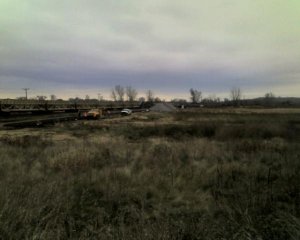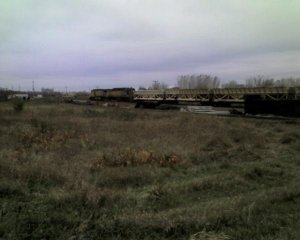Google comes through again:
The DUMP TRAIN is a high-speed aggregate delivery system consisting of 15 articulated cars with a conveyor system under the hoppers on each car. The 16th car is the transfer car that contains the power to run the system and a 50-foot unloading boom. The unloading boom is able to unload in an arc from 90 degrees of track centerline, providing placement at up to 2,000 tons per hour.
GREX notes that the DUMP TRAIN is the only known system that can dump ahead of itself, making it ideal for ballasting in washout and certain other situations.
If needed, GREX can provide a ballast car that is continually fed by the DUMP TRAIN. The ballast car has a plow and gates allowing the ballast to be dumped on the inside or outside of the tracks.
The DUMP TRAIN can also be used in stockpiling aggregate at rail crossings that are to be reworked. No material is wasted in that only the amount of needed material is unloaded.
GREX does not sell the DUMP TRAIN, but is a provider of DUMP TRAIN service to the major Class 1 railroads. The units are primarily used in construction and maintenance-of-way.
The largest job that DUMP TRAINs have been used for has been providing the sub-ballast for the double- and triple-tracking in the Powder River Basin area in Wyoming.
DUMP TRAINs have been chosen as the delivery system of choice for the massive BNSF Arsenal Intermodal project near Joliet, Ill., requiring more than four million tons of aggregates. DUMP TRAINs will be delivering 13,500 tons per day to this project. This will be accomplished by running three DUMP TRAINs together, delivering 4,500 tons per delivery.
With the capability of unloading at 2,000 tons per hour at precise placement, the DUMP TRAINs will be making three deliveries per day over the 33-mile haul.
If done by truck, this would require more than 540 truckloads per day. This job was scheduled to begin in late August and continue throughout the Winter.



